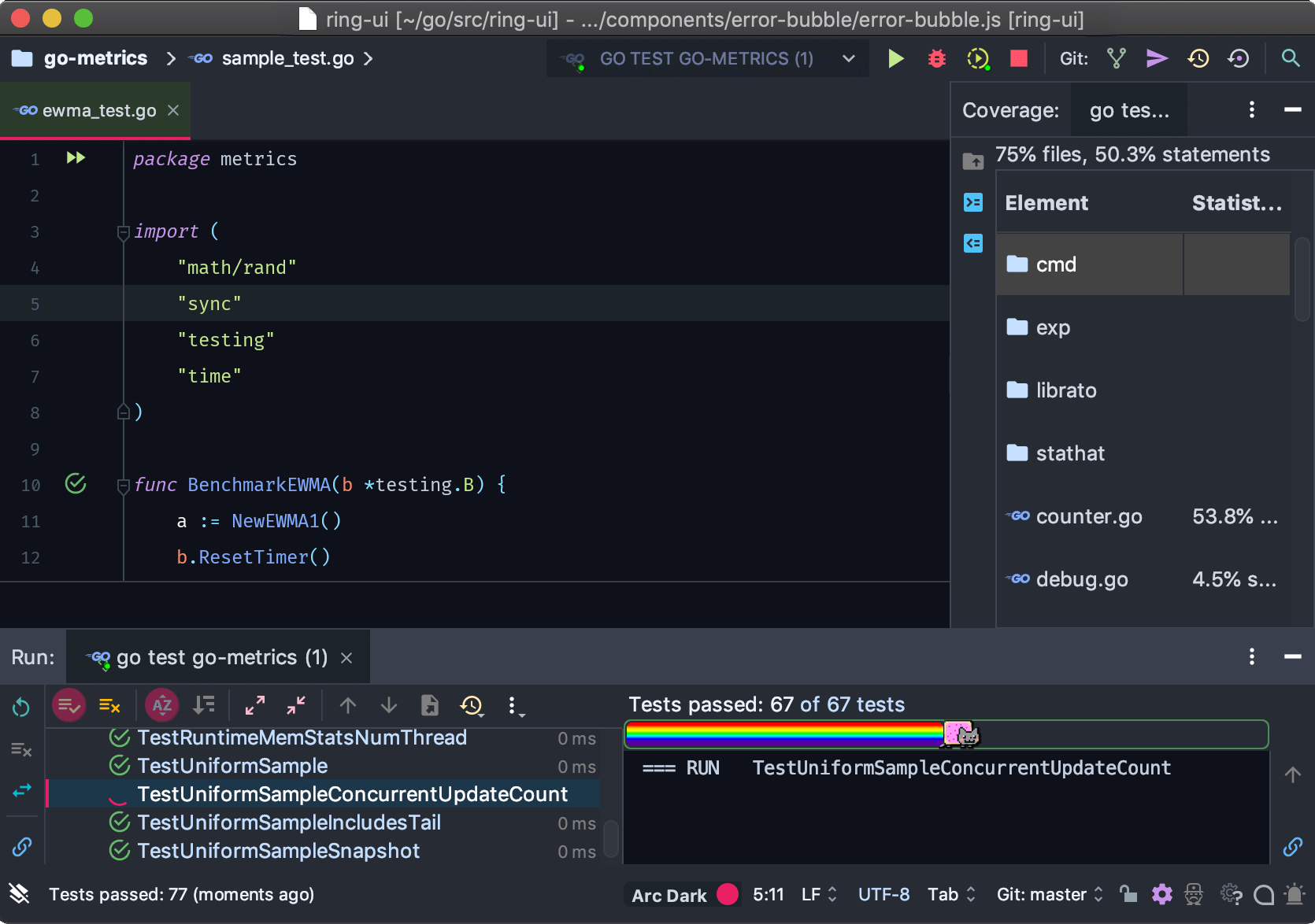所学来自百问网
目录
1.模块简介
2.原理图及接线
3.设备树修改
4.驱动程序
5.应用程序
6.makefile
7.编译运行
1.模块简介
人体都有恒定的体温,一般在37度,所以会发出特定波长10uM左右的红外线,被动式红外探头就是靠探测人体发射的10uM左右的红外线而进行工作的。 人体发射的 10uM 左右的红外线通过菲泥尔滤光片增强后聚集到红外感应源上。 红外感应源通常采用热释电元件,这种元件在接收到人体红外辐射温度发生变化时就会失去电荷平衡,向外释放电荷,后续电路经检测处理后就能产生报警信号。 人体红外模块是一种能够检测人或动物发射的红外线而输出电信号的传感器。广泛应用于各种自动化控制装置中。比如常见的楼道自动开关、防盗报警等。 如果有人在量程内运动,DO引脚将会输出有效信号。
市面上人体红外模块有很多,但其外形和原理都差不多,如下是一个典型的人体红外模式原理图:

实物和使用方法如下图所示,可以设置探测距离、延迟控制等:

通过跳线来设置是否可以重复触发,默认为L。其中L表示不可重复,H表示可重复。含义如下:
① 不可重复触发方式: 感应到人体并输出高电平后,延时时间一结束,输出将自动从高电平变为低电平。
② 重复触发方式: 感应到人体后输出高电平后,在延时时间段内,如果有人体在其感应范围内活动,其输出将一直保持高电平,直到人离开后才延时将高电平变为低电平(感应模块检测到人体的每一次活动后会自动顺延一个延时时间段,并且以最后一次活动的时间为延时时间的起始点)。 可以通过电位器实现封锁时间和检测距离的调节:
① 调节检测距离: 即有效距离的远近。调节距离电位器顺时针旋转,感应距离增大(约 7 米); 反之,感应距离减小(约 3 米)。
② 封锁时间: 感应模块在每一次感应输出后(高电平变为低电平),可以紧跟着设置一个封锁时间,在此时间段内感应器不接收任何感应信号。 此功能可以实现(感应输出时间和封锁时间)两者的间隔工作,可应用于间隔探测产品;同时此功能可有效抑制负载切换过程中产生的各种干扰。 调节延时电位器顺时针旋转,感应延时加长(约300S),反之,感应延时减短(约0.5S)。
2.原理图及接线
以imx6ull为例:

接线图为:

3.设备树修改
进入对应目录在根节点下添加如下代码:


在iomuxc节点下添加:

修改完成后编译设备树
4.驱动程序
#include <linux/module.h>
#include <linux/poll.h>
#include <linux/fs.h>
#include <linux/errno.h>
#include <linux/miscdevice.h>
#include <linux/kernel.h>
#include <linux/major.h>
#include <linux/mutex.h>
#include <linux/proc_fs.h>
#include <linux/seq_file.h>
#include <linux/stat.h>
#include <linux/init.h>
#include <linux/device.h>
#include <linux/tty.h>
#include <linux/kmod.h>
#include <linux/gfp.h>
#include <linux/gpio/consumer.h>
#include <linux/platform_device.h>
#include <linux/of_gpio.h>
#include <linux/of_irq.h>
#include <linux/interrupt.h>
#include <linux/irq.h>
#include <linux/slab.h>
#include <linux/fcntl.h>
#include <linux/timer.h>
#include <linux/workqueue.h>
#include <asm/current.h>
static int major;
static struct class *sr501_class;
static struct gpio_desc *sr501_gpio;
static int irq;
static int sr501_data = 0;
static wait_queue_head_t sr501_wq; // 等待队列
/* 实现对应的open/read/write等函数,填入file_operations结构体 */
static ssize_t sr501_drv_read (struct file *file, char __user *buf, size_t size, loff_t *offset)
{
#if 0
int val;
int len = (size < 4)? size : 4;
val = gpiod_get_value(sr501_gpio);
copy_to_user(buf, &val, len);
return len;
#else
int len = (size < 4)? size : 4;
/*无数据就休眠: 放入某个链表 */
wait_event_interruptible(sr501_wq, sr501_data);
/*有数据就copy_to_uesr */
copy_to_user(buf, &sr501_data, len);
// 重置状态
sr501_data = 0;
return len;
#endif
}
static unsigned int sr501_drv_poll(struct file *fp, poll_table * wait)
{
// printk("%s %s line %d\n", __FILE__, __FUNCTION__, __LINE__);
// poll_wait(fp, &sr501_wait, wait);
return 0;
}
/* 定义自己的file_operations结构体 */
static struct file_operations sr501_fops = {
.owner = THIS_MODULE,
.read = sr501_drv_read,
.poll = sr501_drv_poll,
};
static irqreturn_t sr501_isr(int irq, void *dev_id)
{
printk("%s %s %d\n", __FILE__, __FUNCTION__, __LINE__);
/* 1. 记录数据 */
sr501_data = 1;
/* 2. 唤醒APP:去同一个链表把APP唤醒 */
wake_up(&sr501_wq);
return IRQ_HANDLED; // IRQ_WAKE_THREAD;
}
/* 1. 从platform_device获得GPIO
* 2. gpio=>irq
* 3. request_irq
*/
static int sr501_probe(struct platform_device *pdev)
{
printk("%s %s line %d\n", __FILE__, __FUNCTION__, __LINE__);
/* 1. 获得硬件信息 */
// 获取gpio信息
sr501_gpio = gpiod_get(&pdev->dev, NULL, 0);
// 设置方向
gpiod_direction_input(sr501_gpio);
// 获得中断号
irq = gpiod_to_irq(sr501_gpio);
// 请求中断 此处为双边沿触发
request_irq(irq, sr501_isr, IRQF_TRIGGER_RISING|IRQF_TRIGGER_FALLING, "sr501", NULL);
/* 2. device_create */
// 设备创建放在这里的主要原因是为了当有多个节点匹配时,为每个节点创建设备
device_create(sr501_class, NULL, MKDEV(major, 0), NULL, "/dev/sr501");
printk("%s %s line %d\n", __FILE__, __FUNCTION__, __LINE__);
return 0;
}
static int sr501_remove(struct platform_device *pdev)
{
// 设备销毁
device_destroy(sr501_class, MKDEV(major, 0));
// 清空中断号
free_irq(irq, NULL);
// 释放获取的GPIO信息
gpiod_put(sr501_gpio);
return 0;
}
// 用于与platform_driver匹配
static const struct of_device_id ask100_sr501[] = {
{ .compatible = "100ask,sr501" },
{ },
};
/* 1. 定义platform_driver */
static struct platform_driver sr501s_driver = {
.probe = sr501_probe,
.remove = sr501_remove,
.driver = {
.name = "100ask_sr501",
.of_match_table = ask100_sr501,
},
};
/* 2. 在入口函数注册platform_driver */
static int __init sr501_init(void)
{
int err;
printk("%s %s line %d\n", __FILE__, __FUNCTION__, __LINE__);
/* 注册file_operations */
major = register_chrdev(0, "sr501", &sr501_fops);
sr501_class = class_create(THIS_MODULE, "sr501_class");
if (IS_ERR(sr501_class)) {
printk("%s %s line %d\n", __FILE__, __FUNCTION__, __LINE__);
unregister_chrdev(major, "sr501");
return PTR_ERR(sr501_class);
}
// 初始化等待队列
init_waitqueue_head(&sr501_wq);
err = platform_driver_register(&sr501s_driver);
printk("%s %s line %d\n", __FILE__, __FUNCTION__, __LINE__);
return err;
}
/* 3. 有入口函数就应该有出口函数:卸载驱动程序时,就会去调用这个出口函数
* 卸载platform_driver
*/
static void __exit sr501_exit(void)
{
printk("%s %s line %d\n", __FILE__, __FUNCTION__, __LINE__);
platform_driver_unregister(&sr501s_driver);
class_destroy(sr501_class);
unregister_chrdev(major, "sr501");
}
/* 7. 其他完善:提供设备信息,自动创建设备节点 */
module_init(sr501_init);
module_exit(sr501_exit);
MODULE_LICENSE("GPL");5.应用程序
#include <sys/types.h>
#include <sys/stat.h>
#include <fcntl.h>
#include <unistd.h>
#include <stdio.h>
#include <string.h>
#include <poll.h>
#include <signal.h>
static int fd;
/*
* ./sr501_test /dev/sr501
*
*/
int main(int argc, char **argv)
{
int val;
/* 1. 判断参数 */
if (argc != 2)
{
printf("Usage: %s <dev>\n", argv[0]);
return -1;
}
/* 2. 打开文件 */
fd = open(argv[1], O_RDWR);
if (fd == -1)
{
printf("can not open file %s\n", argv[1]);
return -1;
}
while (1)
{
if (read(fd, &val, 4) == 4)
printf("get body: 0x%x\n", val);
else
printf("while get body: -1\n");
}
close(fd);
return 0;
}6.makefile
# 1. 使用不同的开发板内核时, 一定要修改KERN_DIR
# 2. KERN_DIR中的内核要事先配置、编译, 为了能编译内核, 要先设置下列环境变量:
# 2.1 ARCH, 比如: export ARCH=arm64
# 2.2 CROSS_COMPILE, 比如: export CROSS_COMPILE=aarch64-linux-gnu-
# 2.3 PATH, 比如: export PATH=$PATH:/home/book/100ask_roc-rk3399-pc/ToolChain-6.3.1/gcc-linaro-6.3.1-2017.05-x86_64_aarch64-linux-gnu/bin
# 注意: 不同的开发板不同的编译器上述3个环境变量不一定相同,
# 请参考各开发板的高级用户使用手册
KERN_DIR = /home/book/100ask_imx6ull-sdk/Linux-4.9.88
all:
make -C $(KERN_DIR) M=`pwd` modules
$(CROSS_COMPILE)gcc -o sr501_test sr501_test.c
clean:
make -C $(KERN_DIR) M=`pwd` modules clean
rm -rf modules.order sr501_test
# 参考内核源码drivers/char/ipmi/Makefile
# 要想把a.c, b.c编译成ab.ko, 可以这样指定:
# ab-y := a.o b.o
# obj-m += ab.o
obj-m += sr501_drv.o7.编译运行
将编译好的设备树传入开发板并复制到/boot目录下并重启开发板
[root@100ask:/mnt]# cp 100ask_imx6ull-14x14.dtb /boot
[root@100ask:/mnt]# reboot编译出ko文件:

传入开发板

装载并查看驱动是否装载成功

查看是否匹配成功

运行




![[数据集][目标检测]电力场景输电线杆塔塔架金属锈蚀腐蚀生锈检测数据集VOC+YOLO格式1344张1类别](https://i-blog.csdnimg.cn/direct/36564dc7ddd743d987ddf29feedf4534.png)








![BaseCTF [第 1 周] ez_maze](https://i-blog.csdnimg.cn/direct/14275c5f9c114c479882e00c09ad9a05.png)







